Paprika is a vibrant and flavorful spice derived from the ground bell and chili peppers. Renowned for its rich red color, it ranges from sweet and mild to smoky and spicy, depending on the variety. A staple in Hungarian, Spanish, and Moroccan cuisines, paprika is commonly used to add color and depth to various dishes. It's a key ingredient in classic recipes like goulash, paella, and paprikash and is also sprinkled on top of foods for a burst of color and flavor.
But what do you do when you discover this crucial ingredient is unavailable? In this blog post, we'll explore the different types of paprika and the taste they offer, along with a range of alternatives that stand in for paprika's distinct flavor and bring their unique qualities to your cooking.
What Is Paprika
Paprika is a ground spice crafted from an assortment of dried red peppers, from sweet bell peppers to spicier chili peppers. Originating from Central America and brought to Europe by the Spaniards, it has become a staple in many cuisines, especially Hungarian, Spanish, and Portuguese cooking.
The flavor of paprika varies, spanning from sweet and mild to smoked and spicy. It is celebrated for its ability to add a mild, sweet, or smoky flavor and its vibrant red color, enhancing dishes' visual appeal. Commonly used in stews and soups and as a garnish, paprika is integral to dishes like Hungarian goulash and Spanish paella.
Types Of Paprika
Sweet Paprika
This mild and subtly sweet variety is made from red bell peppers. It's excellent for adding vibrant color and a gentle hint of sweetness to dishes without any heat. Sweet paprika is a key ingredient in classic Hungarian goulash and is equally delightful in potato salads and creamy sauces. It is also a colorful garnish on dishes like deviled eggs and hummus. Its mildness makes it a versatile spice, suitable for enhancing the visual appeal of a dish while contributing a subtle flavor.
Hot Paprika
Made from hotter chili peppers, this type of paprika brings considerable heat. It's perfect for those recipes that require a bit of spice, such as spicy stews, chili, and barbecue rubs. Hot paprika can transform a dish by adding both heat and a rich red hue, making it ideal for culinary traditions that embrace spicier flavors.
Smoked Paprika (Pimentón)
Renowned for its distinct smoky aroma, smoked paprika, especially in Spanish, 'Pimentón,' is perfect for dishes needing a deep, smoky touch. It is available in three varieties:
Pimentón Dulce (Sweet): This variety adds a gentle smoky flavor to Spanish paella, roasted meats, and vegetables.
Pimentón Agridulce (Bittersweet): This versatile type suits marinades, barbecue sauces, and smoked dishes, offering a balanced blend of smoke, sweetness, and mild heat.
Pimentón Picante (Hot): Ideal for dishes that demand both smokiness and heat, such as spicy chorizo and hearty stews.
Hungarian Paprika
This paprika is celebrated in Hungarian cuisine and comes in various heat levels.
Édesnemes (Noble Sweet): This common variety is known for its bright color and sweet taste, making it perfect for traditional Hungarian dishes like chicken paprikash.
Other varieties range from mild to hot and can be chosen based on the desired heat level in traditional Hungarian and Eastern European dishes.
Spanish Paprika
Less sweet than its Hungarian counterpart, Spanish paprika is known for its vibrant, earthy flavor. It's a great addition to Spanish and Mediterranean dishes, especially where the smokiness of Pimentón isn't required. Use it in seafood dishes, soups, and vegetable preparations for a mild, peppery flavor and a pop of color.
The 12 Best Paprika Substitutes To Try
Cayenne Pepper Powder
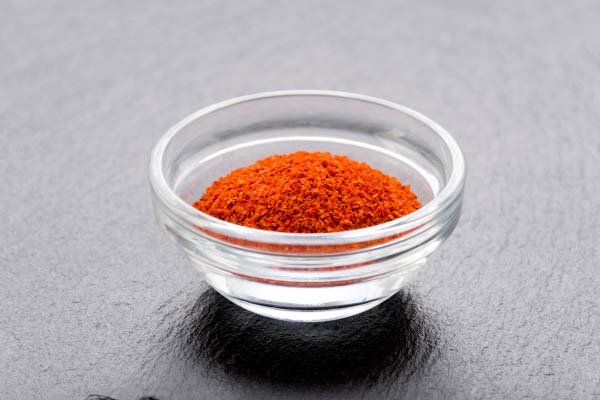
Cayenne pepper powder is an efficient hot paprika substitute when a recipe requires a spicy kick. While paprika can range from mild to hot, cayenne pepper is consistently known for its high heat level. If you seek to substitute Hungarian paprika, blending cayenne pepper with some sweet paprika is best.
Made from pure ground cayenne chilies, it brings a sharp, fiery flavor that can add both heat and a vibrant red color to dishes. However, due to its intense spiciness, it should be used sparingly — start with just a pinch or a quarter of the amount of paprika called for, and adjust to taste.
Cayenne pepper is particularly suitable in dishes where the heat level is a key component, like spicy sauces, rubs for meats, and hot dishes like coconut curries or chili.
Crushed Red Pepper Flakes
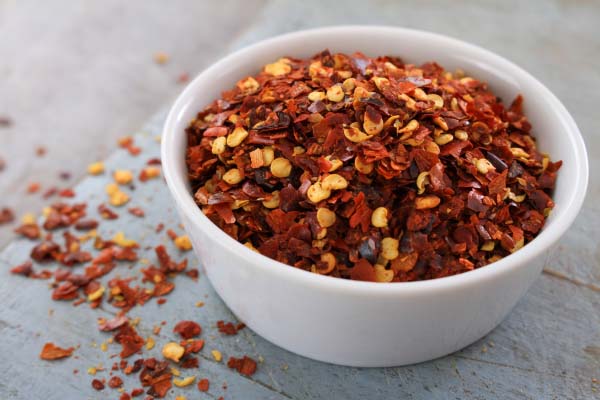
Crushed red pepper flakes, commonly used to add a spicy zest to various dishes, can substitute for hot paprika. Red pepper flakes are made from crushed dried chili peppers and offer a more textured and less concentrated heat than ground paprika.
When substituting with red pepper flakes, it's recommended to begin with approximately half the quantity of paprika specified in the recipe, as red pepper flakes can have a more pronounced spiciness. This substitution is ideal in dishes where a flaky, rustic texture and a spicy flavor are welcome, such as in pasta sauces, pizza toppings, and dishes where you want to add a visual element, like a savory butternut squash soup.
Smoked Paprika Or Pimentón
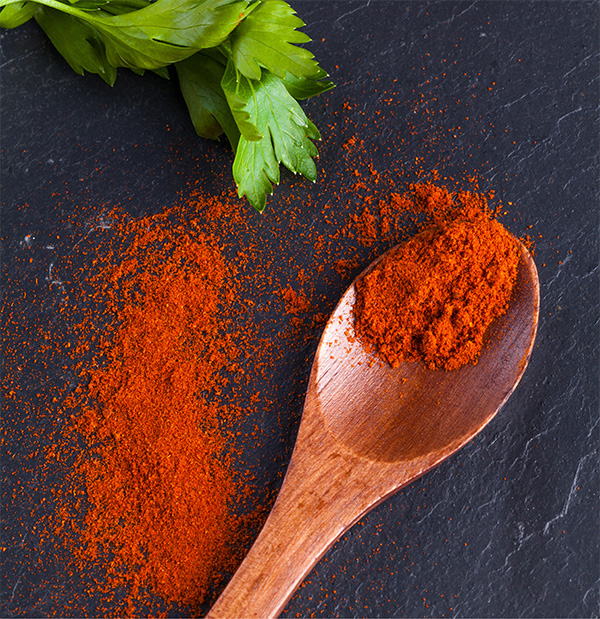
Smoked Paprika, or Pimentón, is an excellent substitute for regular paprika, particularly when a recipe benefits from a rich, smoky flavor. Derived from smoked and dried peppers before grinding, smoked paprika imparts a deeper, more complex taste than regular paprika's milder, sweeter profile.
When substituting smoked paprika for regular paprika, use a one-to-one ratio, but consider the intensity of the smokiness and adjust according to personal taste and the requirements of the dish. This substitute is especially effective in dishes like barbecues, stews, and rubs for meats, where its smoky depth can enhance the overall flavor profile. Smoked paprika is also a great addition to vegetarian dishes, lending a meaty complexity without using animal products.
Tomato Paste
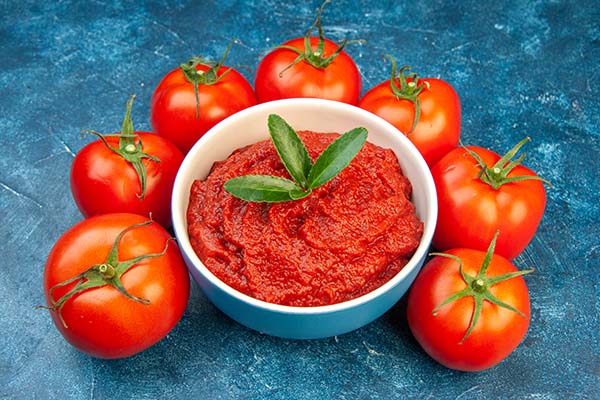
Image by KamranAydinov on Freepik
Tomato paste can be a surprisingly effective substitute for sweet paprika in certain recipes, especially when the goal is to add color and a hint of sweetness without significant heat. Tomato paste, made from concentrated tomatoes, offers a rich, deep red hue and a natural sweetness, somewhat mimicking the milder varieties of paprika.
When using tomato paste as a substitute, start with a small amount, about half of the paprika called for in the recipe, and adjust to achieve the desired color and flavor. This substitution works particularly well in stews, soups, and sauces, where tomato paste's thickness and concentrated flavor can blend seamlessly, enriching the dish's overall taste and appearance.
Beet Powder
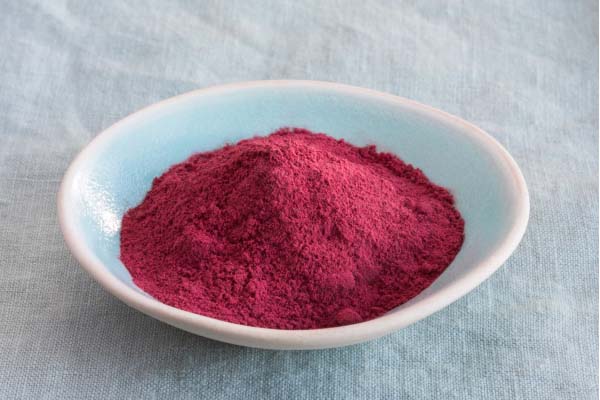
Beet powder can be an excellent substitute for paprika, particularly when the primary goal is to replicate the vibrant color that paprika imparts to dishes. Made from dried and ground beets, beet powder offers a deep red hue, similar to paprika, adding visual appeal to various dishes. However, its flavor is sweeter and earthier, lacking the heat or smokiness of paprika.
When substituting beet powder for paprika, use it in equal amounts to achieve a similar color intensity. This substitute is especially useful in dishes like soups, sauces, and dressings, where color is key, and the earthy sweetness of beets can complement the other flavors. Beet powder is also a great addition to smoothies and baked goods for a natural color boost.
Ancho Chile Powder
Ancho chile powder, derived from dried and ground poblano peppers, is an excellent substitute for paprika, particularly for individuals desiring a milder and subtly sweet flavor profile. While ancho powder shares paprika's vibrant red color, it brings its own unique taste—mildly spicy with hints of dried fruit, making it a versatile alternative.
When substituting ancho powder for paprika, use a one-to-one ratio, but be mindful of its slightly sweeter and more complex flavor. Ancho powder works exceptionally well in Mexican and Southwestern cuisines, lending a gentle heat and rich color to sauces, rubs, and stews. It's especially useful in recipes where a bit of warmth is desired without the sharp bite of hotter chili powders.
Chili Powder
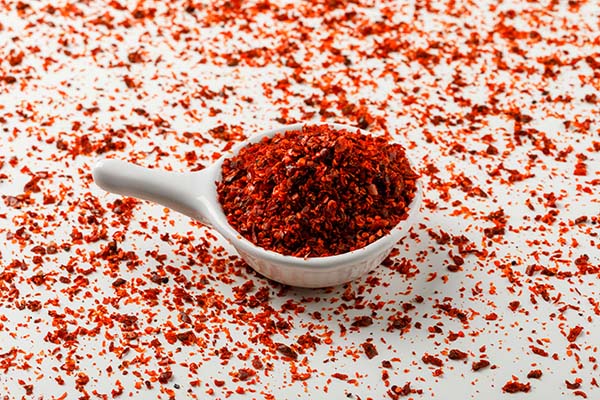
Chili powder stands out as a versatile substitute for paprika, particularly in recipes where an added layer of complexity and spice is welcomed. Unlike paprika, which is typically made from ground bell and chili peppers, chili powder is a blend of spices, including ground chilies, garlic powder, cumin, onion powder, and sometimes oregano. This blend offers both heat and a depth of flavor, making it a suitable alternative for dishes that can accommodate an additional spice layer.
When substituting chili powder for paprika, consider using about half the amount initially, as its flavor profile is usually more intense and spicier than paprika. Chili powder is particularly effective in heartier dishes like stews, chili, and barbecue rubs, where its complex flavor can add both warmth and color.
Aleppo Chili Powder
Aleppo chili powder, derived from the moderately spicy and slightly sweet Aleppo pepper, is an excellent substitute for paprika. Renowned for its unique flavor profile that combines the warmth of cumin with the tang of sundried tomatoes, Aleppo chili powder offers a perfect balance of heat and subtle fruitiness. Its moderate heat level makes it a versatile option for individuals looking to incorporate a mild and well-rounded spiciness into their dishes.
A one-to-one ratio generally works well when using Aleppo chili powder as a paprika substitute. However, adjustments can be made according to personal taste preferences and the desired spice level. This substitution is particularly effective in Middle Eastern and Mediterranean cuisine, enhancing dishes like kebabs, stews, and dips with its distinctive flavor. It also adds a delightful complexity to rubs, marinades, and sauces.
Chipotle Powder

Chipotle powder, made from smoked and dried jalapeño peppers, is one of the best-smoked paprika substitutes, especially when a smoky depth and a spicy kick are desired in a dish. It brings a distinctive smoky flavor and a moderate to high heat level, setting it apart from the typically mild paprika.
When substituting chipotle powder for smoked paprika, consider using less than the amount of paprika called for, starting with about half and adjusting to taste. This is due to its stronger flavor and higher heat level. Chipotle powder shines in dishes where a rich, smoky heat complements the other flavors, such as barbecue sauces, chili, and meat rubs. If your chipotle powder doesn't provide enough of the smoke flavor you seek, I recommend adding some smoked salt or liquid smoke.
Hot Sauce

Hot sauce is an unconventional but effective paprika substitute, especially in recipes where a liquid component can be seamlessly integrated. Unlike paprika's dry, earthy essence, liquid hot sauce offers a tangy, vinegary kick and varying heat levels, depending on the brand and type used.
When using hot sauce as a paprika substitute, it's crucial to consider its liquid consistency and stronger acidic flavor. Start with a small amount, like a few drops or a teaspoon, for every tablespoon of paprika, and adjust according to taste and the desired spice level. Hot sauce works exceptionally well in soups, stews, marinades, and sauces where its liquid form can blend into the dish, providing a spicy undertone.
Pasilla Pepper Powder
Pasilla pepper powder, made from dried and ground chilaca peppers, is a unique substitute for paprika, especially in recipes with a more complex and nuanced flavor. Characterized by its deep, rich taste with hints of berry and grape, pasilla pepper powder offers a mild to medium heat level, providing a subtler spice than some paprika varieties.
When substituting pasilla pepper powder for paprika, use it in a one-to-one ratio, but be mindful of its distinct flavor profile, which includes earthy and smoky undertones. This substitute is particularly effective in traditional Mexican dishes such as moles and salsas, whose complexity can enhance the depth of flavors. It also works well in rubs for meats and stews, adding a subtle warmth and richness.
Red Bell Pepper
Red bell pepper powder, derived from dried and ground red bell peppers, is an excellent substitute for sweet paprika, especially when sweet paprika isn't available or you're looking for a whole-food option. It maintains a vibrant color and imparts a comparable sweet and fruity flavor to dishes. This alternative is particularly useful in recipes where paprika's mild sweetness and color are desired, such as in soups, stews, rubs, and garnishes.
When substituting, use red bell pepper powder in a 1:1 ratio with sweet paprika. Red bell pepper powder is best used in culinary applications that benefit from its natural sweetness and bright color. It enhances the dish without introducing the smokiness or heat that other paprika variants might contribute.
